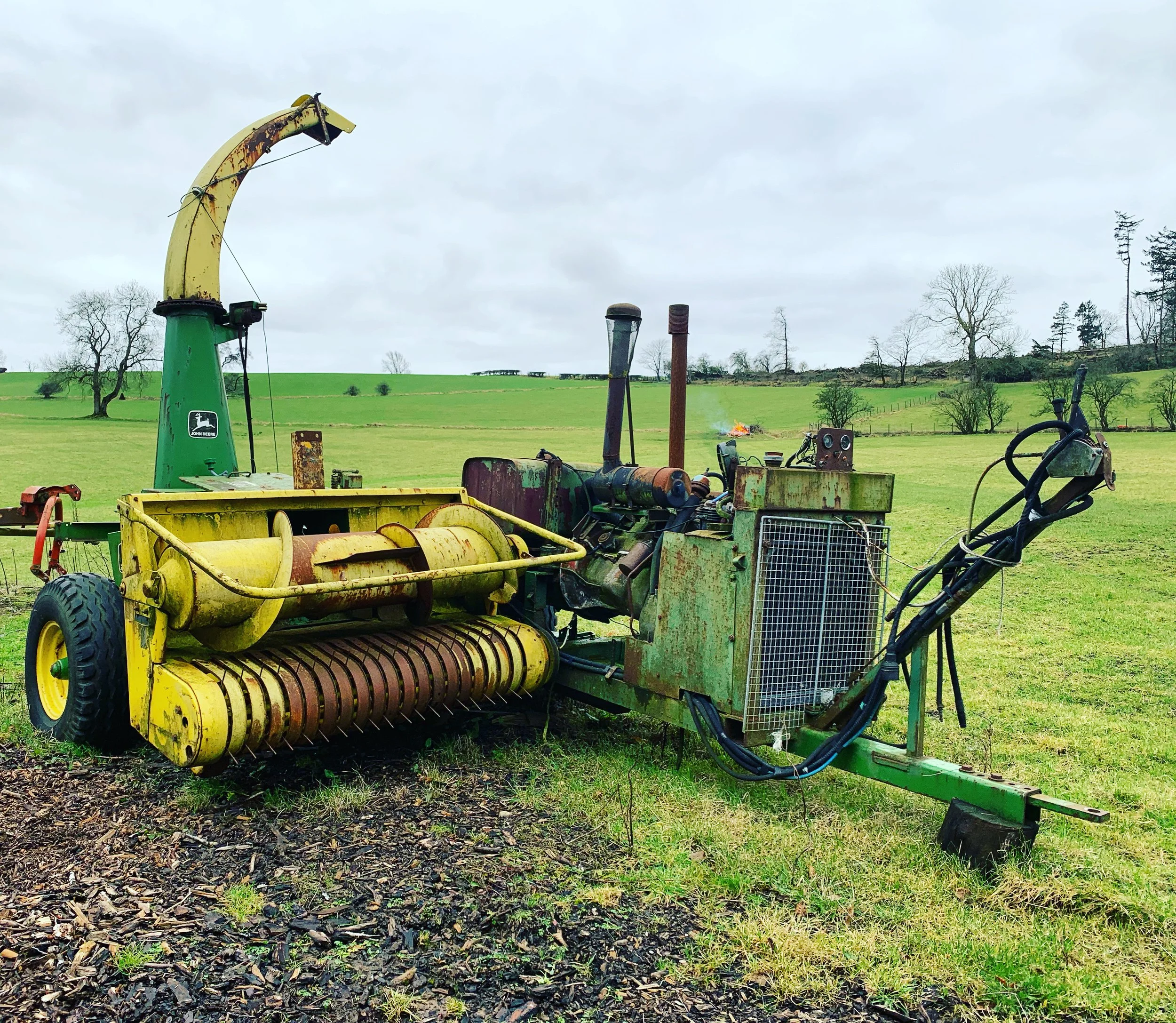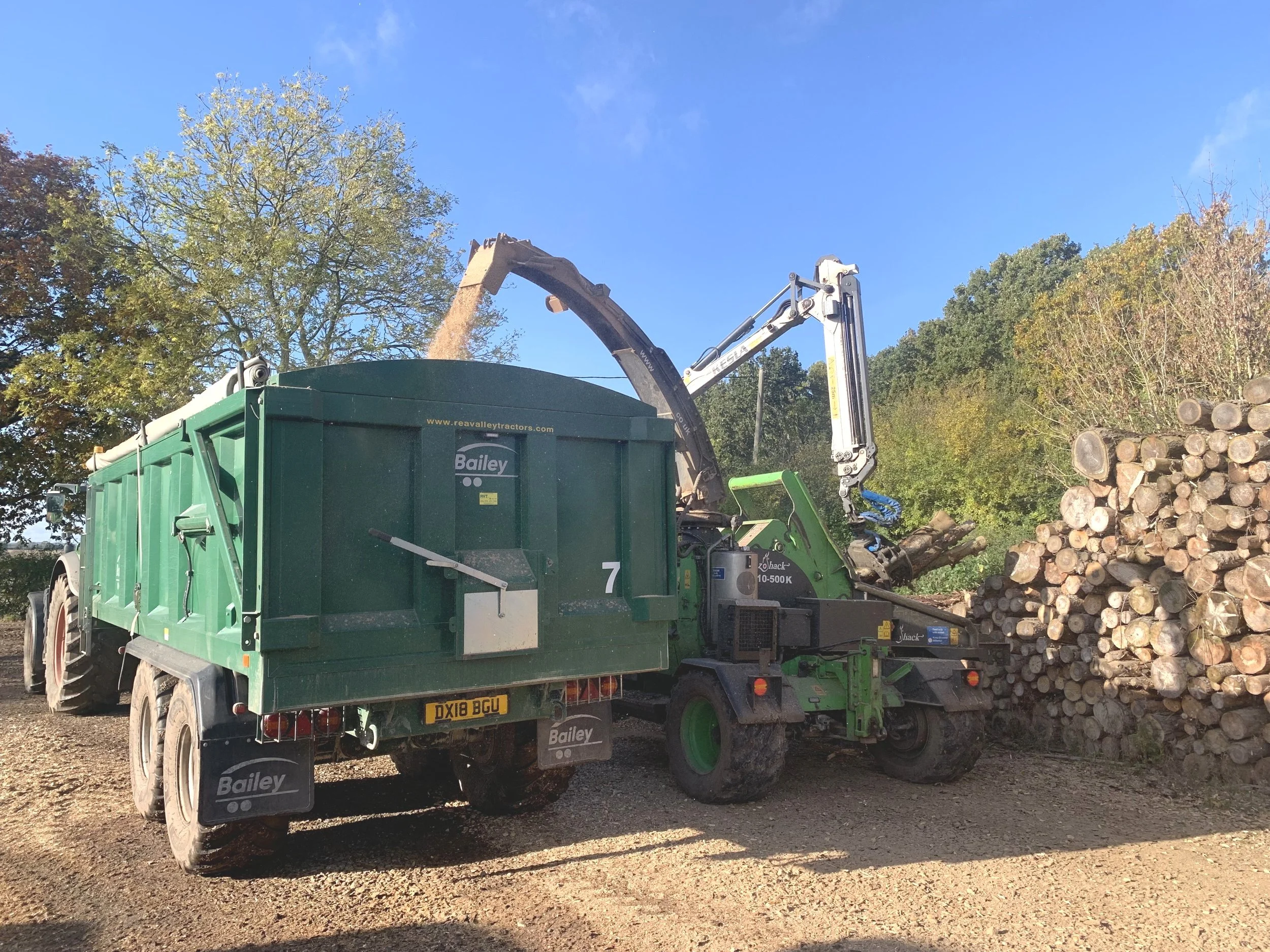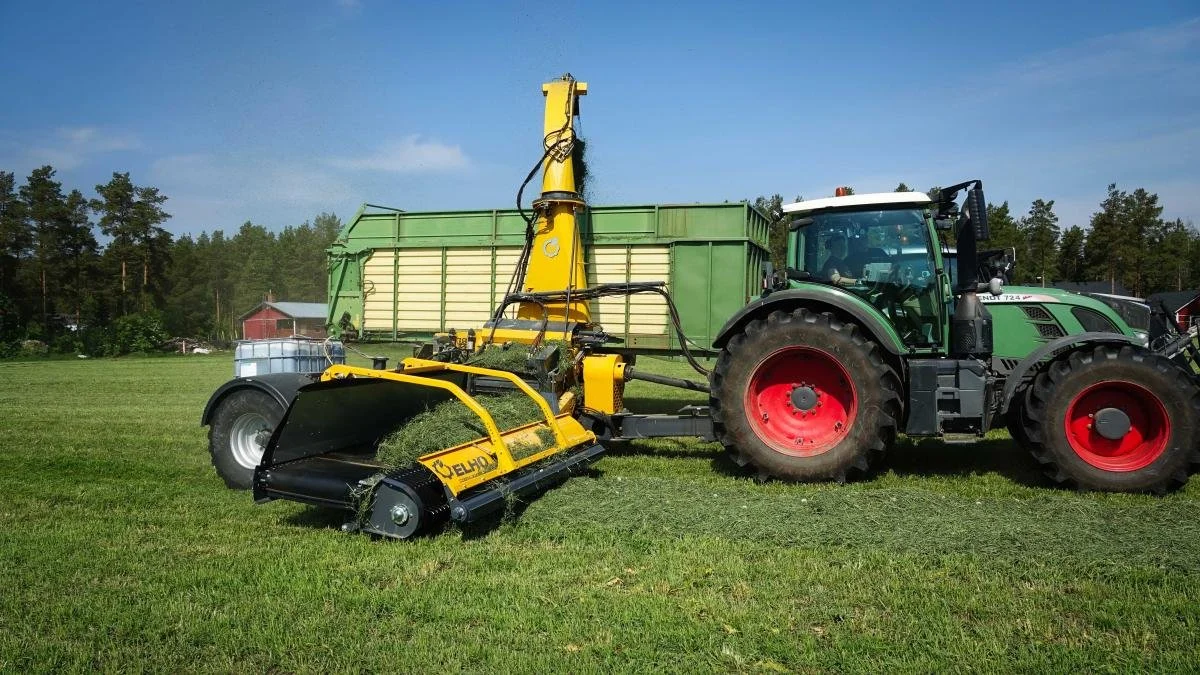What happened to trailed forage harvesters?
Just like many small boys, I love some shiny new farm kit. But just like lots of other sad old gits, I can get a bit misty eyed over a modern classic. I guess it’s a sign of aging, but one man’s modern classic is the next man’s rusty relic.
There are not many things in the world that are more exciting than the latest and greatest gazillion horsepower monster in green or yellow with an appetite for forage that can shade a drunk man’s appetite for curry. But just occasionally I think back to the very first precision chopper that I saw - a Bamford S4 - and wonder just how would that square up to today’s silage harvests, and where did they all go?
Bamford S4 period photo from Classic Tractor Magazine
Whatever happened to the trailed forage harvester?
That was the thing, all the forage harvesters that followed, actually did follow, because they were all trailed back in the day. Fast forward a few decades and everything is self propelled, so why the change?
Mostly this is down to horsepower because chopping plant material into 20mm strips takes lots of ponies and the average tractor back in the 1970’s was only about 60-75hp. Self propelled machines had hundreds of ponies. Well in actual fact the first Claas Jaguar 60 SF had the grand total of 120hp, but that was still twice as much as most tractors of the day.
Then there was the third way, the engine-on trailed harvester like the Claas Jaguar 75 E. This gave you the horsepower that you only ever needed for chopping grass but without all the added cost and complexity of driven wheels, brakes, seats and steering wheels. But while these machines did have their moment in the sun, they didn’t last so why have trailed harvesters now almost disappeared without trace?
Some trailed choppers came out of the factory with their engine, some didn’t
Is there a place for trailed harvesters today?
Engine-on harvesters seem to have had their day but there are still some trailed or drag choppers out there doing their stuff. Horsepower is not as rare as it once was and surely there is an opportunity for the trailed chopper with those farmers and contractors who do “need” their 300hp tractor. There always seems to be a market for the JF 900’s and 1000 series harvesters but there must be a gap for some new stuff too?
Trailed harvesters were the hotbeds of innovation.
The JF had a reverse drum principal that meant the shear bar was on top of the feed housing, rather than the bottom, as the front of the drum was spinning upwards. This idea allowed the crop to escape the drum after less than a quarter of its rotation as opposed to a traditional solution (common to all self propelled harvesters) that keeps the crop in there for almost 270 degrees.
This innovation was a common theme for trailed harvester engineers because horsepower was always in short supply compared with self propelled harvesters. This led to several different ideas to get more grass chopped per pony.
The flywheel principal, made famous by the Mengele SH40, was designed to help the poor old tractor cope with a lumpy swath. The momentum of that flywheel gave the engine a fighting chance of keeping its head above water when the going got tough. Unfortunately although this principal was given some life extension as the Lely Storm I think that it has finally sunk without trace, SO was this the end…..
Then something got me thinking a couple of years ago whilst watching a trailed wood chipper making absolute mince out of fallen trees. Here was a 250hp Valtra eating trees like candy, so if it can do that to logs, why are we messing around with £600,000 forage harvesters? I started to do some research and discovered that the Finnish engineers at ELHO have been thinking much harder and longer than I had.
Trailed wood chippers are common in the UK
Is the ELHO Cobra the future of chopping grass?
Well it might be but it’s having a long slow gestation from what we see here. This machine has all the efficiency lessons learned from wood chipping machines built into its grass chopping future but it’s still unlikely to threaten the mighty Jaguar and Big X dynasties. This has nothing to do with its potential or prowess at chopping grass. No its problem is that it is designed to chop grass - just like all its trailed predecessors. That’s because the beauty of the self propelled machine is its ability to chomp though grass, maize, whole crop and biomass. The trailed machine is never going to be a maize machine because it’s trailed….and offset.
Maybe trailed forage harvester do have a future - the ELHO Cobra 7710T
Even if you could get an eight row header on the thing the poor operator would be so far away from the business end it would be a real hit and miss affair - and where the hell would the trailer need to be? No these machines are designed for nice rows of grass.
This doesn’t mean there isn't a future for the Cobra 7710T though, because there are thousands of machines that are sold to farmers and contractors that can chop grass but can’t chop maize. They are called forage wagons and they have the similar power requirement to the Cobra. So maybe that’s the target market for the Finns, taking on the wagon market. The harvester defiantly has an advantage when it comes to chop quality and consistency when compared to a wagon, but it comes with some of the same baggage as a self propped chopper.
A machine that stays in the field and does what it’s best at - the chopping - needs trailers running to and from it. So there is a greater demand on logistics, a greater demand for drivers and tractors with a harvester than a wagon, and for those of us with no friends, that can be a problem.
Whether it’s nostalgia or not I don’t know, but I do hope this type of machine finds a gap in the market because I like the thinking processes behind it. And because (along with swath mergers) it’s genuinely something a bit different and new, and that seems to be a very rare thing today.
If you want to discuss trailed or self propelled harvesters or would like to discuss any other aspects covered in this series, contact me at jeremy@silageconsultant.co.uk



